Inside the Tank | Spiteful Brewing’s Jason Klein
Spiteful Brewing, started by Brad Shaffer & Jason Klein, has put out a lot of different beers since they began brewing back in 2012. The beers are well-known in Chicago for their unique labels and creative names. When we walked into their brewing space for the first time I was shocked at how small of an area they work with. In fact their current space is only 1,600 sq. feet, but luckily will be moving into a new space with nearly 7,500 sq. ft – a tremendous upgrade.
We sat down with co-founder and brewer Jason Klein to talk about Spiteful and how they’ve managed to operate in such a small space, what the new space will mean to the brewery and anything else related to craft beer.
You and co-founder Brad have been friends for a while right?
We actually met playing hockey on the neighborhood pond when we eight or so. We ended up playing together in high school. Even when we went to different colleges we stayed friends.
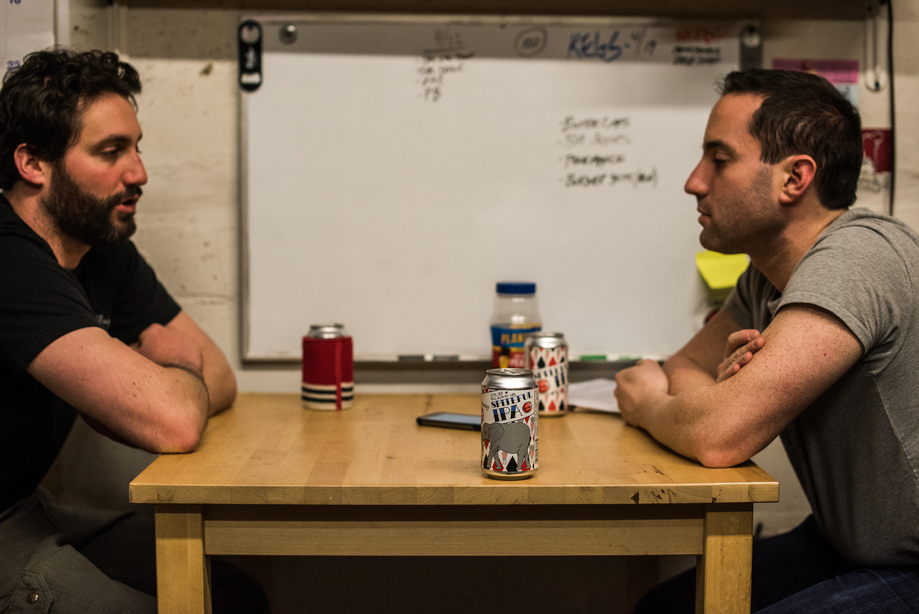
Did you guys get into beer together?
No, we didn’t. I went to school in Arizona and he went to school in Boulder and that’s where he discovered good beer. I was still drinking Keystone Light in college and the occasional Sierra Nevada Pale Ale, but that was only when we were treating ourselves.
I didn’t drink much in the way of craft beer in college. I moved back to Chicago after graduation and Brad stayed out there (Boulder) for a little bit and then he moved back. Once he moved back he was the one who introduced me to craft beer. He would come to our house and ask me why we had all this crap beer. He would always bring his own beer. We would make fun of him for having his own beer and then you try it and you realize that’s why he has his own beer – it’s actually a lot better.
Did you start home brewing? How did the brewery idea get going?
We were both not happy with our current job situations. We knew we wanted to do something together but we didn’t know what it was going to be. We wanted to do a bar initially, but when you start sitting down and planning it, we realized we knew nothing about running a bar.
It’s a very different business. We know a lot about being on the other side of the bar and drinking, but nothing about running it. When you start putting the numbers together you need a lot of money to start a bar. You can’t start a miniature bar – it doesn’t work that way.
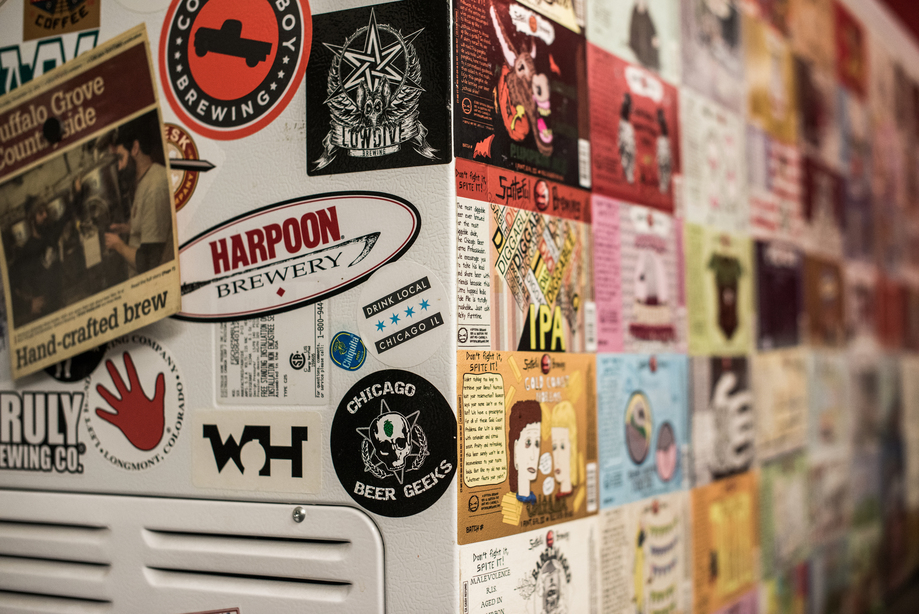
So we tried to figure out what we were passionate about and we had that eureka moment when we were drinking really good beer. I come from a manufacturing background and knew I’d love to make something so we decided to start a brewery. From there we started researching it and we figured out you could actually start a small brewery without tons of capital right out of the gate. That’s when we started home brewing. We decided to open a brewery and then we got into home brewing which is a little different than most people.
We were home brewing very aggressively, doing three batches a week for three years basically. It was our second job. We had a goal that we were going to open up a brewery so we approached home brewing very differently than a lot of home brewers do.
So you both wanted to open a brewery and brew beer even though neither of you had ever done anything in the industry before?
Yep. We knew we loved the product and we were passionate about great beer – so that part was easy. Without passion i think it’s very hard to start your own business. We had the passion part and when we started home brewing we really loved it. If we didn’t love home brewing at some point we would have figured it out that we didn’t want to do this for the rest of our lives.
Where do you get your recipes?
The first two or three batches were kits. Then we graduated to all grain and it wasn’t a kit anymore but it was a recipe we found somewhere that tells you exactly what to buy. Then eventually, I’d say seven or eight batches in maybe, we started making our own recipes. It took a lot of reading to understand how to do it and how to get the flavors we wanted and execute it.
From there we would taste everything to see what worked and what wouldn’t work. We had a pretty bad smoked malt experiment. We went along our path of experimenting and brewing and that’s where three years of aggressively home brewing helped us. When we started commercial brewing that was one of our most daunting issues. Our first couple of batches, we had the recipes and we just scaled them up but after that we knew we had to get more recipes but we didn’t have time to pilot them.
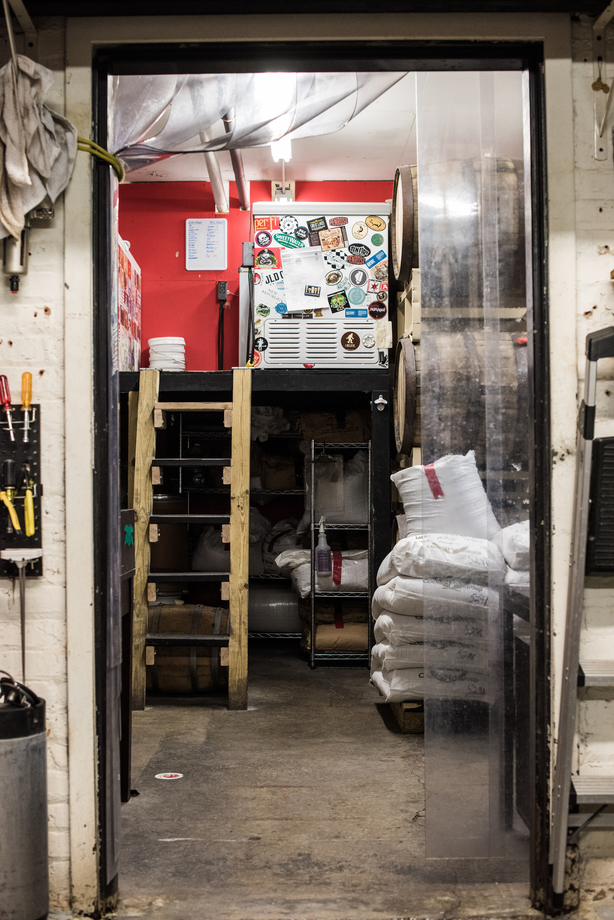
Like anything else you start doing it and it becomes a little bit easier. The approach is just different. We’re not talking about 5 pounds of this grain and 10 pounds of that ingredient, it’s all percentages now – it’s a different approach.
Looking back at when you started home brewing, did you ever think you’d be in this position today with a fully operation brewing that’s about to open up a brand new location?
Yes we did. That was the goal. The timeline may not have matched what we wanted, but the goal was to open up a brewery. This small location we knew was always a stepping stone for our bigger goal. We have four employees and that is something I didn’t think we’d be able to do in this very small space. When we hired our first employee it hit you and we knew that we really couldn’t fuck this up because it’s not just us anymore. That was a great feeling though to have another employee and start to see your vision grow.
Let’s talk about the new space. Spiteful is currently working with 1,600 sq. feet and the new space will be 7,500 sq. feet. How is that going to change the brewery?
It will grow the brewery in the sense that we will have a lot more of our beer out there which is our goal. We have a system that is going to focus on just cans so we can get beer out to the Chicagoland area. Then we will also be bringing our unique beers and small batch brews to our tap room.
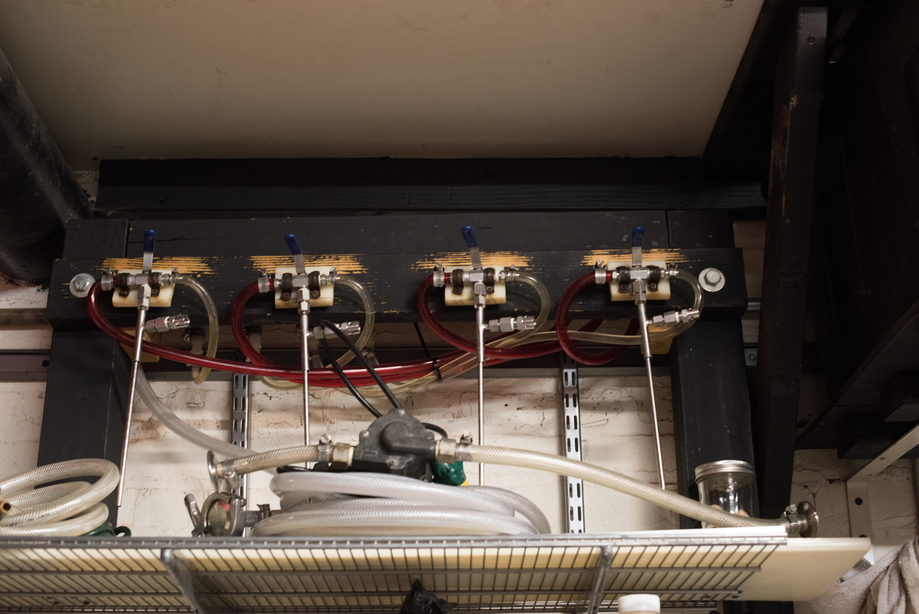
We’re still going to have all these beers that we’ve brewed and we’re still going to continue to brew them. We’re going to take the high volume beers and create a production section in the new brewery and then take the small volume stuff and make those beers in a different space.
Spiteful doesn’t have a ton of accounts and we’re not that big in terms of our production. We’re only at about 200 cases a week of cans so it’s not that huge. There aren’t any cans in the suburbs and we’ll be able to fill those orders now and increase our reach.
I heard the search for the new location was not easy.
It was not. I was a little surprised because when we were searching for our current space it was such a small space because we needed to keep the rent low that it was very hard to find. That’s why I thought when we were looking for a place around 10,000 sq. feet it would be easy.
We’re a business that needs a big building and it was not easy. It took us months of finding and searching the city to find our location. We knew we wanted a Chicago address, that was very important to us. We wanted to stay here but there wasn’t a lot available to us in this neighborhood. Ravenswood is a very popular place right now and with a brewery you need very high ceilings and certain utilities, there are a few requirements that if we were a retail business you wouldn’t have. The high ceilings actually eliminated a bunch of properties – they just weren’t tall enough. It got frustrating because there were a bunch of places that we saw that didn’t feel quite right. We could have made it work but it wouldn’t have felt like Spiteful.
We wanted the new place to feel like a forever home, not a “we’re making it work home.” The new space we have definitely feels like a forever home. It’s like when you’re looking for an apartment or something, when you walk in you just know and you know right away if you don’t like it.
When are you planning to brew your first batch of beer in the new space?
That’s a very good question. That depends on a lot of things actually. I’d like to brew it in 2016. But there’s a lot that has to happen that is not necessarily in our control. So we will see.
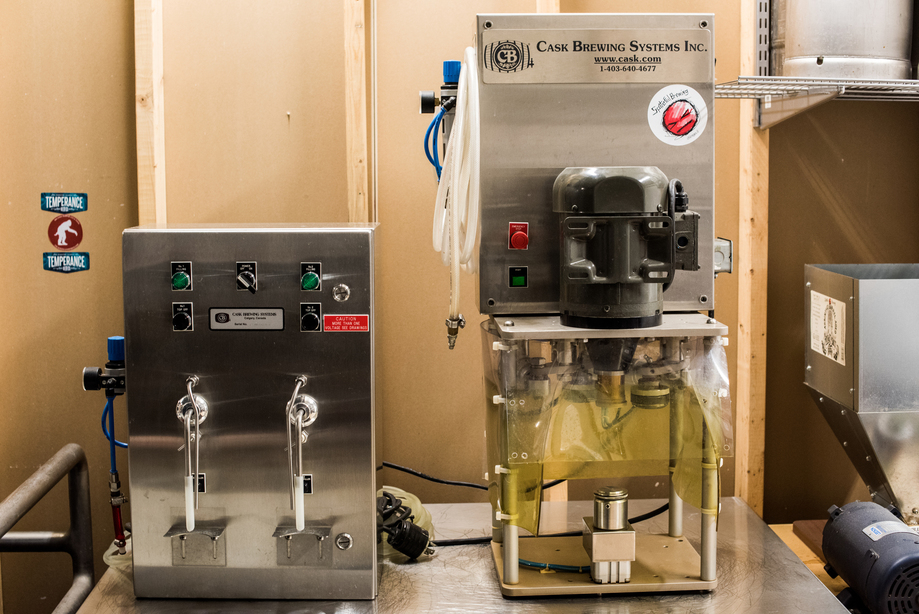
You mentioned the tap room above. So the plan is to have a tap room open at some point?
Definitely. We wanted a place where we could have a tap room. That was a very high priority for us. That was part of our initial plan when we first wanted to open up a brewery, was that eventually we wanted to have a taproom.
We couldn’t have one in this space, so that’s why this was always phase one. We’ve never been able to let people come into our world. We can’t do tours here obviously because of the space, so we’re very excited to be able to showcase who we are and our personality to the city. Festivals are awesome because that’s the only time that we can meet with people face-to-tac and we really enjoy that part of the festivals.
Your neighbor in the new space is Half Acre. How awesome is that for you guys?
It’s great! They’re our neighbors here in this space, just not as close. They’re just down the street now and they’ve been great to us since day one. They actually helped us can our very first batch. We were buying some of the lids from them and when our canning line showed up and it wasn’t running perfectly, they came over and helped us. That’s amazing to me that they would take time out of their day to come here and help us.
We’ve come to know them and that’s where we drink. They’re great neighbors. They actually tipped us off to the building that we’re moving into. They were already brewing in their new space and I was already frustrated with the process of looking for our new space. We talked to Half Acre and a few days later they sent me a text to check out this building. You really can’t ask for a better situation.
Can you guys learn more from Half Acre?
We already have and I don’t see that stopping. They’ve been through a lot and are kind of the seasoned veterans here in Chicago. They’ve been through everything we’re about to go through and to have them as a resource is invaluable.
How many beers have you brewed?
I think it’s over a hundred. We’re in our fourth year brewing and it’s about a hundred different beers…I’m trying to figure out how many times I had to buy UPCs. It’s somewhere in there – it’s fun.
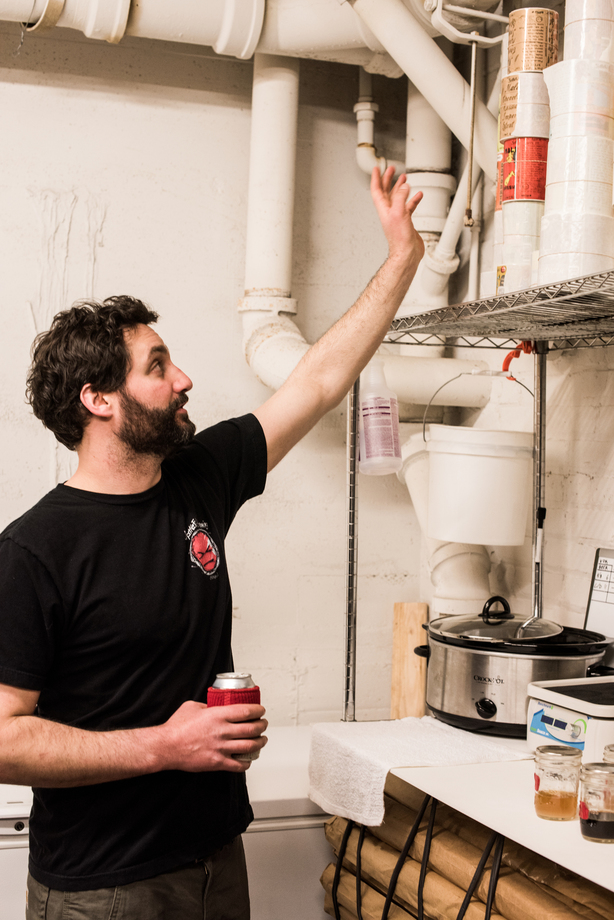
It’s a lot of different beers and it kind of accelerated our learning curve a little bit. For a while we were only in bombers and now we actually do more cans than bombers. With bombers you have to make different beers to keep it interesting. It kind of forces you to have a brewpub mentality in a production-style brewing situation. Brew pubs get to do that all the time because you have to keep it fresh.
You have your staples, which we have with our four canned beers, but then you have all this room to grow, be flexible, experiment and have fun. The only difference is we have to package where as a brewpub can sell it on premise. It’s been kind of the best of both worlds for us.
How do you guys come up with a new beer?
It kind of just depends on the style and what we are trying to accomplish. We’ll generally think of something we want to do and then we’ll try it out and talk about it. We might taste some other beers that might be kind similar, whether it’s a style or a certain ingredient we’re looking for. We love porters, stouts and IPAs so we tend to brew a lot of those.
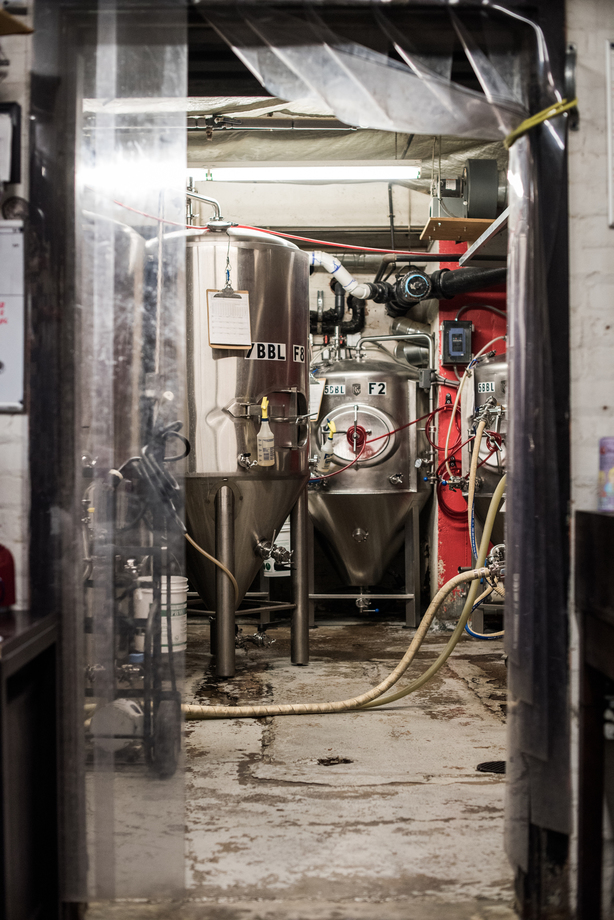
There’s a lot that we would like to do but can’t because of our size. We’d love to do a lager and when we do move we’ll have a whole new world of beer styles that will open to us and that will be fantastic.
We’ll plan out the production schedule and we’ll decide we want to do a stout. Then we’ll figure out what we want from this stout – we want this kind of body, we want this kind of roast count maybe we want this adjunct, maybe we don’t. From the flavor profiles we’ll create the recipe. We figure out what we want out of the beer and then we go and get it.
Spiteful has some of the most unique names for it’s beers. Where do you come up with the names?
Thank you. That’s awesome! We feel that is a sense of pride for us. The names tend to come from occurrences in our lives, people that we run into or situations we run into. We’re spiteful so we make fun of those things. That’s where a lot of the names come from.
They’re all kind of generated from inside these walls. We have a book and anytime someone has an idea or something they want to make fun of it goes into this book. From there we can take the ideas in the book and come up with the names – it’s a very organic process. You let it come naturally and you just know. Then you google it to make sure no one else has it and then sometimes you start over.
How did you come up with the name Spiteful Brewing?
Brad actually came up with the name Spiteful Brewing. We are spiteful people. We were very spiteful growing up and we break each others’ balls a lot – we’re friends but we do things to spite each other. We had a name picked out that we couldn’t use because of a potential trademark issue and we didn’t even want to go down that route so we scraped it. We were trying to force the name much like the beer names in the beginning and nothing felt right.
Someone told us at one point that the company has to be about you and that turned out to be some of the best advice we ever got. It all of a sudden made everything easy and we realized that the brand is an extension of who we are – for better or for us. The company is real and it’s us and we’re spiteful so Spiteful Brewery it is.
No beer in Chicago this year has been hotter than Malevolence. Whether it’s the barrel-aged or one of the many variants – what’s it like to have that “celebrity beer?”
I never really thought about it that way. It’s been brewed in the past. It’s a great beer that was actually a home brew receive that we worked on with Carlos and Adrian, who work at Dry Hop now, before any of us were open. We all sat down and drank a bunch of stouts and tried to figure out what we would do. The base recipe comes from that and we scaled it up from there.
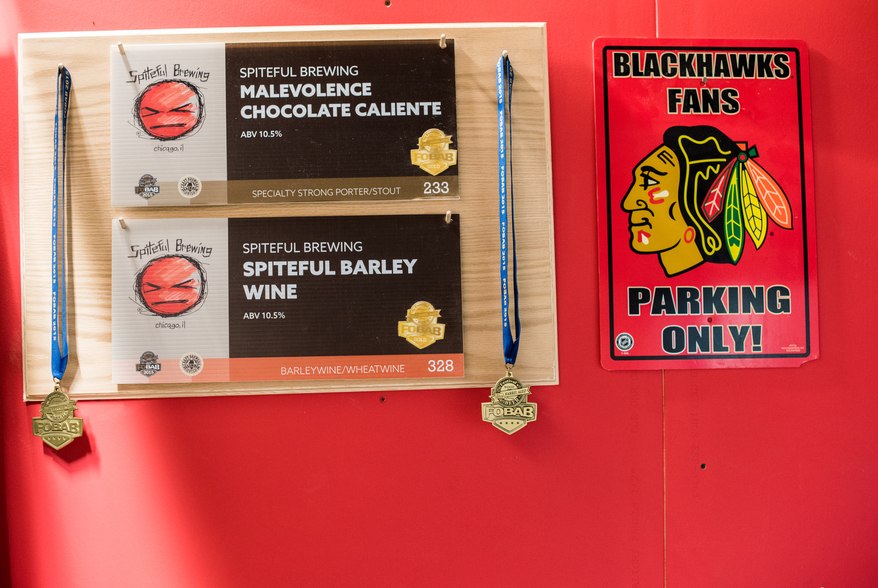
When we moved into this space we had a library of recipes that we liked from when we were home brewing, I still have the original Malevolence beers that I should probably drink soon, but that was one that we always liked. We made sure everyone was OK with us brewing it and it’s been a great beer. It’s everything we love about a stout but we never foresaw the demand like there is now. It feels great that people want something so badly that you make. The fact that people want what you make is the whole goal.
In this space you don’t have a lot of barrels, in the new space are you hoping to grow your barrel program?
It’s probably not a priority right now. Space is tight, which is kind of ridiculous thinking about moving into 7,500 sq. ft from what we are in now, but with the tap room and the larger equipment coming in space fills up quickly. We will have barrels but we don’t know how much. It’s something we love to do because we love barrel-aging beer. But it’s just a function of how much space we have. There will always be barrel-aged stuff we just don’t know how much. I can tell you that we won’t have a barrel warehouse or a barrel section. Who knows what the future holds though.
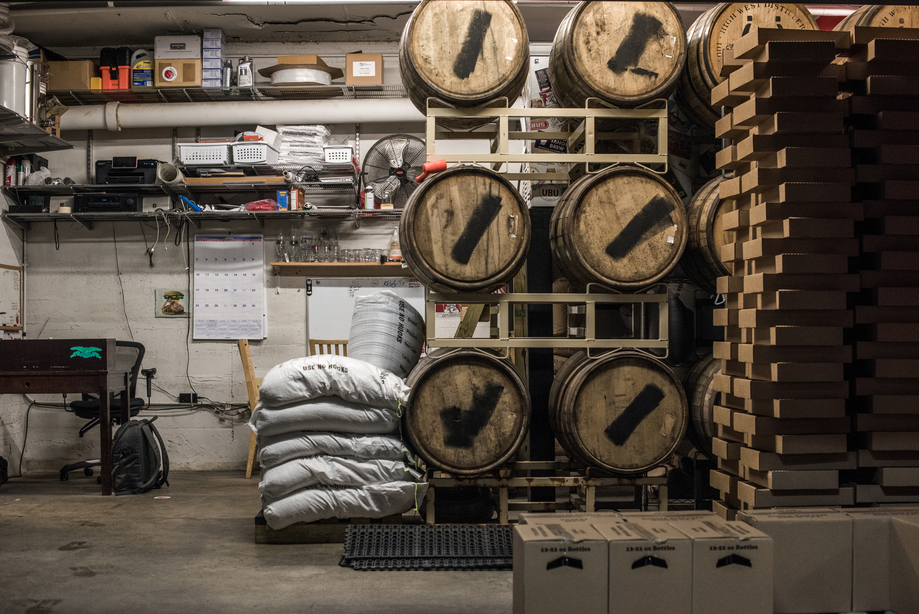
The labels, like the names of your beers are very unique. You mentioned you have an in-house artist – how does he get the ideas for the label artwork?
Luke Snobeck is our in-house artist and he draws everything by hand and then scans it in. He just does his thing. He draws certain things and he comes to us with an idea and we talk about our vision and he takes it all in. He’s amazing at it. He’s developed a style, and the artwork to me is as important, if not more important than the beer. Everyone shops with their eyes – I’m guilty of it. If I see a really cool label I’ll probably pick it up and look at it.
What advice would you give someone looking to open a brewery in Chicago?
It’s very dependent on what their background is. If they’re a home brewer who wants to move into the commercial space, I’d say that’s a great start. Even if you don’t become the brewer, and you just want to own a brewery, it’s important to know the process and what goes into making the beer.
I’d say go work somewhere which is easier said than done. When Brad worked for Pipeworks that was volunteer work. You need to be able to financially handle the situation. If you’re in a corporate job being paid ‘x’ amount of money a year, most likely the brewery job isn’t paying that. Make sure you can support yourself financially and get as much experience as you can brewing commercial beer. For us that was extremely valuable to have that experience. That education, you can read all you want, but it’s kind of like school. Just because you read about science doesn’t mean you can do science – you have to have that real-world experience. Having that experience was imperative to our success and that would be the biggest thing you could do.
Craft beer is one of the hottest industries right now. What are some of the challenges this industry faces?
I think there’s going to be a challenge with the trademark issues. You have to do your homework to avoid it. As we’re all trying to get our own beer names that’s going to be an issue. I mean how many variations of having the word ‘hop’ in a beer are there before you start repeating.
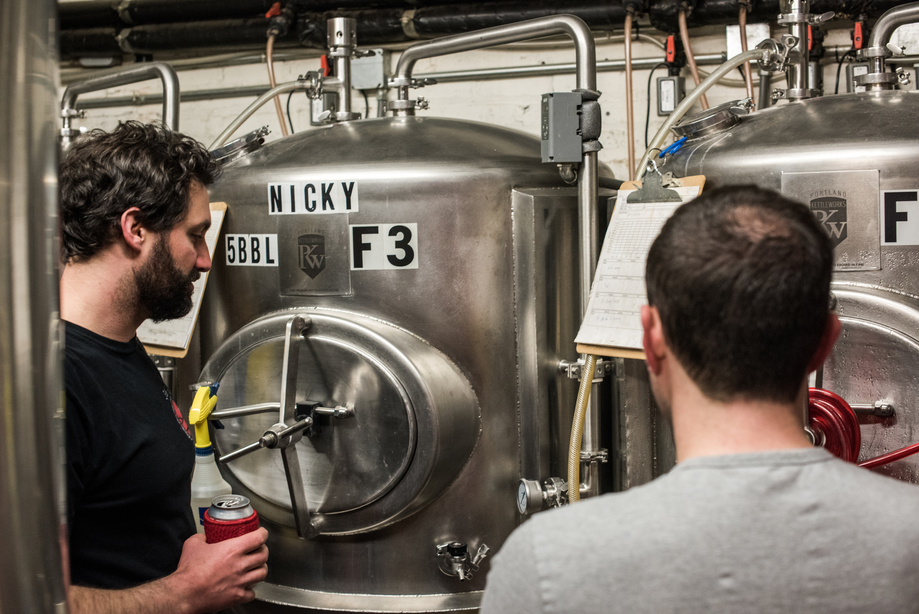
I think quality is something that everyone should always be improving. I don’t think there’s an issue with it, but we don’t have the resources like other big breweries so you have to make the best beer with what you have. The biggest difference between a home brewer and brewing commercially is consistency. It’s not easy to be consistent and that’s the part where you need to focus because that’s the starting point for quality.
Everyone wants to talk about the crowded landscape in the industry but I don’t think we’re there yet. I don’t consider the number of breweries opening up a challenge. The challenge is that if everybody wants to have their beer at the same place – that is when you’ll see things get tight. But there are a thousand bars, or however many there are in Chicago, so there’s a place for craft beer that maybe doesn’t have craft beer yet. There are plenty of bars that don’t have any craft handles and that’s a huge opportunity to make this a craft state. We can spread it out and It think there is room of everyone. It’s not necessarily a challenge but how can you properly spread. Getting creative to get craft beer out to as many people as possible will be the challenge.
Here’s an easy question. What’s your favorite style of beer, favorite Spiteful beer and if you’re not drinking Spiteful what are you drinking?
Those are all hard questions. Favorite style is very dependent on the mood I’m in and what kind of environment I’m in. We brew a ton of porters, stouts and IPAs, so if I’m grilling I’d like to have something like that to go with that situation and the food. It’s definitely dependent on how I’m feeling.
My favorite Spiteful beer is a little bit easier because I’m very biased. Working for the Weekend is a beer I made based off of my wedding so by default that is my favorite beer we make. We did not make a double IPA for the wedding, that would have been a terrible idea, so we made a pale ale but Working for the Weekend, which is a double IPA, is based off of that and it will always have a special place in my heart.
We have a pretty big neighbor next to us so I do find myself drinking a lot of Half Acre. Pony Pils is one of my favorites right now. We can’t do a Pilsner and I’m very jealous and they do a great one.
What’s your thought on breweries being bought up by bigger breweries?
I don’t think it’s fair to judge someone on their decision to sell. You don’t know their situation, you don’t know what their goals were when they started. If people want to get bought, that’s their thing, it’s definitely not our plan, but it’s never been part of our plan.
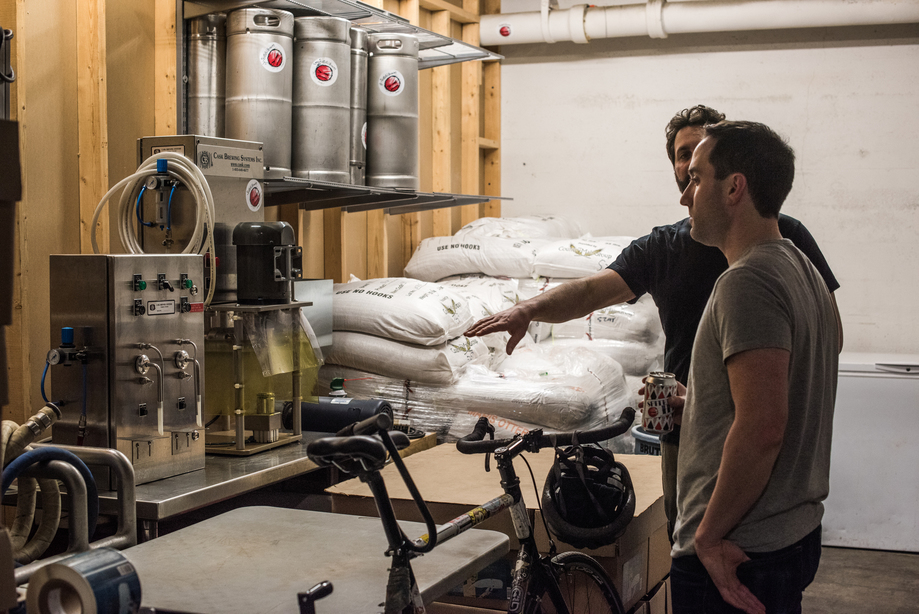
I don’t know how it will affect the industry and I think that’s what we’re going to see now. Can they truly remain independent of the bigger companies. I don’t know the answer to that. Some of the bigger companies do not want us around. I look at that type of relationship very cautiously.
You have Budweiser trying to incentivize to only want distributors to sell their product and they will pay them for that. These are the same people that are supposed to be your friends but how can they be both. I’ll say that the people that are in those breweries and work for them are the same and they’re awesome. It’s nothing against those people, they are still our friends, but at the end of the day they are owned by everything we are against.
I think it’s a cautious way to look at it. Their goal is to be the only brewery in the world no matter which of the big main three you pick. Their goal has always been world domination and they’re not going to worry about stepping on us. They’re buying of craft breweries is just a way to get rid of us. But again the people haven’t changed and they are people that we want to support and be friends with – it’s bittersweet.
What’s the future for Spiteful?
The future is to open up this damn new building and get it going. Our focus is to continue what we’ve been doing and not let that slide, and then get this expansion open and get the building up and running. We’d love to open up more draft accounts, we have very few right now, so we’d love to get into that landscape more. Then of course the tap room – we are very excited about the tap room.
MIKE ZOLLER IS THE CHICAGO EDITOR FOR PORCHDRINKING.COM. FOLLOW HIM ON INSTAGRAM: @CHICAGOBEER AND PORCHDRINKING CHICAGO’S TWITTER FEED: @PORCHDRINKCHI


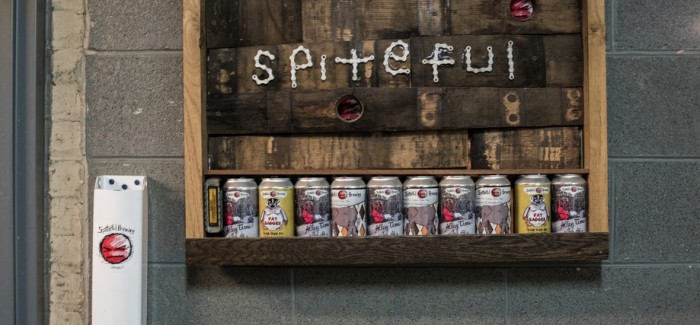
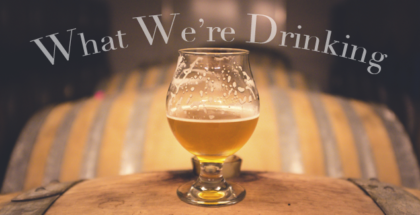
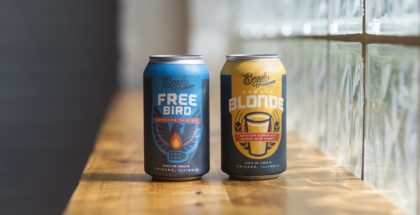
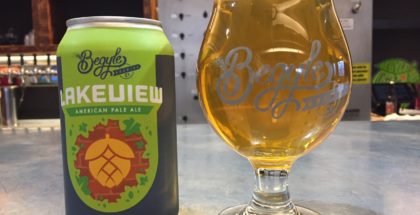
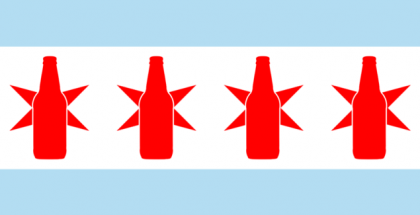
Submit a Comment